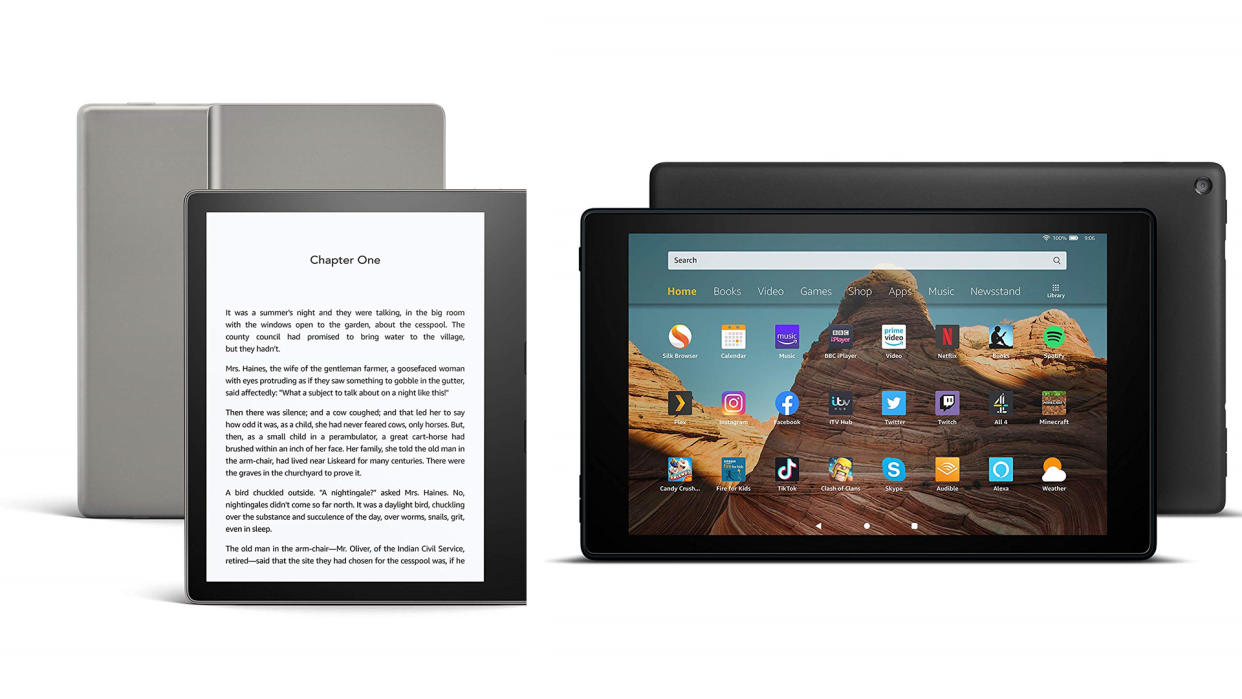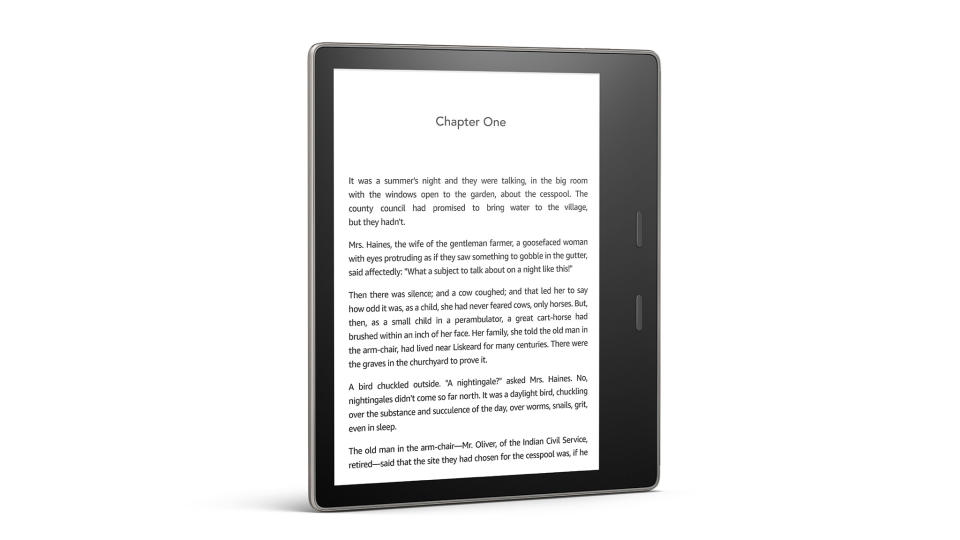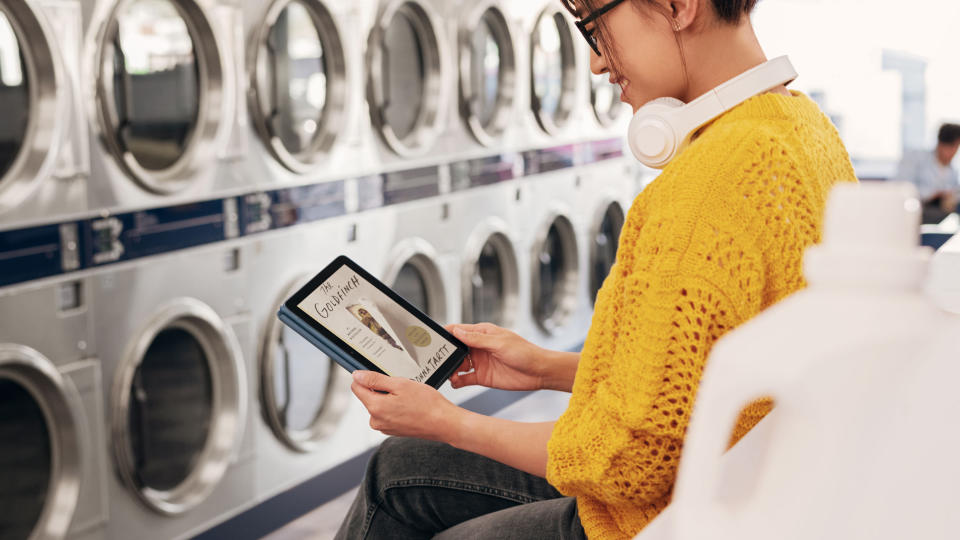Kindle vs Fire: Which Amazon e-reader is right for you in 2022?

If you're trying to decide between buying a Kindle vs Fire tablet, we're here to help. It can be tough to understand exactly what functionalities each device packs, so we've conducted a side-by-side analysis so you can confidently make a purchase.
Both of these Amazon devices are handheld and have a touchscreen, but your choice will come down to what you need a tablet for. A Kindle is an e-reader, meaning it is primarily used for reading content using the brand's E-Ink screen technology that makes your screen look like a physical page.
The Amazon Fire range, on the other hand, is better suited for people who are looking for one of the best tablets. These devices have a full HD screen enabling you to watch movies and series, make and receive video calls, browse the internet and social media, shop online, and of course, read your favorite books.
Aside from their uses and functionalities, we've compared the Kindle vs Fire ranges in-depth, taking factors such as the display, the apps available, and the lighting into account so you can make an informed purchasing decision. Read on to find out which is best for you!
Kindle vs. Fire: Display
All three of Amazon’s current Fire tablets use standard glass displays which are susceptible to glare from external light sources. They all incorporate advanced polarising filters into their screens to alleviate this issue, but there is only so much that technology can do against the power of the sun.
Glare is much less of a concern on Amazon’s range of Kindle e-readers thanks to their E Ink display technology. This means that their screens react to light in a similar manner to real paper, giving off a more matte appearance.
When it comes to screen resolution, pixels per inch (ppi) is the key metric to look out for. While the basic Kindle has a 167ppi screen resolution, both the Kindle Paperwhite and Kindle Oasis have a 300ppi resolution. The Fire 7 tablet has a 7-inch 1024 x 600 screen which results in a 171ppi while the Fire HD 8 has an 8-inch 1280 x 800 screen offering 189ppi.

Even Amazon’s flagship model, the Fire HD 10 which has a 10.1-inch 1920 x 1200 screen still only reaches 224ppi. As a result, the Kindle Paperweight and Kindle Oasis offer the best reading experience when it comes to text clarity.
Kindle vs. Fire: Lighting
Like all tablets, the Kindle Fires are backlit, which means that the display is created by shining lights from behind the screen towards your eyes. The colors are far crisper, and you can use the device at night without any problem. These types of screens are better for watching videos but when reading books, the direct lights can strain and dry out your eyes.
All three of the current Amazon Kindles offer what is known as front-lighting. In this case, the LEDs are mounted around the edge of the screen, in-front of the display itself. Since the lights aren’t being shone directly into your eyes, this type of lighting is much gentler and allows for extended reading without eye-strain. These lights are also adjustable so you can tailor the brightness to your preferences.

Kindle vs. Fire: Media
While they don’t provide as good a reading experience as the Kindle range, the Fire tablets pull things back when it comes to their versatility. All three versions of the Amazon Fire can play videos and music as well as access internet browsers and social media. This means you can stream YouTube videos directly to your Fire tablet when you don’t feel like reading.
By contrast, the Kindle is designed for one thing and one thing only - reading books. It’s really good at it though. You’ll have access to thousands of books, magazines, and newspapers but you won’t be able to access photos, videos or other kinds of digital media.
Comic book fans can use either the Kindle or Fire tablet to read their favorite comics, but the Kindle’s screen technology only supports grey scale images. If color is important to you, then a Fire tablet is the way to go.

If you’re looking for audiobooks, both the Kindle and Fire ranges have you covered with native support. You can even sign up for a subscription to Amazon’s own audiobook service, Audible, if you want a constant stream of new content. Audible gives you access to one audiobook and two audible original shows per month.
Kindle vs. Fire: Apps
Other E-Reader Articles
Looking for more content? Then take a look at our Amazon Kindle Paperwhite review, or for something simpler and cheaper read our Amazon Kindle review. You may also be interested in our guide to the best Kindle deals.
Another area that the Fire tablet range wins out over the Kindle e-readers is in apps. Amazon Fire tablets have access to thousands of Android-based apps. Whether you want to use Facebook and Twitter, watch videos on Netflix or Amazon Prime, or play Minecraft, every Fire tablet has the power to run any Android app.
By contrast, the Kindle e-readers do not have any additional apps. While they do have a built-in dictionary, you won't be able to run any social or media apps from the device. Some people prefer the fact that e-readers do not have any distracting apps that might draw them away from their reading.
Kindle vs. Fire: Verdict
In the end, it all comes down to what you’re looking for. If you just want the best reading experience possible and don’t care about any extra bells and whistles, then an Amazon Kindle e-reader is your best bet. Likewise if audiobooks are your main driving force then a Kindle will cover your needs handily.
However, if you want a versatile multimedia device that can also serve as an e-reader when required then you should look into the Amazon Fire tablet range. These devices do everything the Kindle does and more, offering access to TV, Film and music streaming as well as letting you read you favorite e-books.
